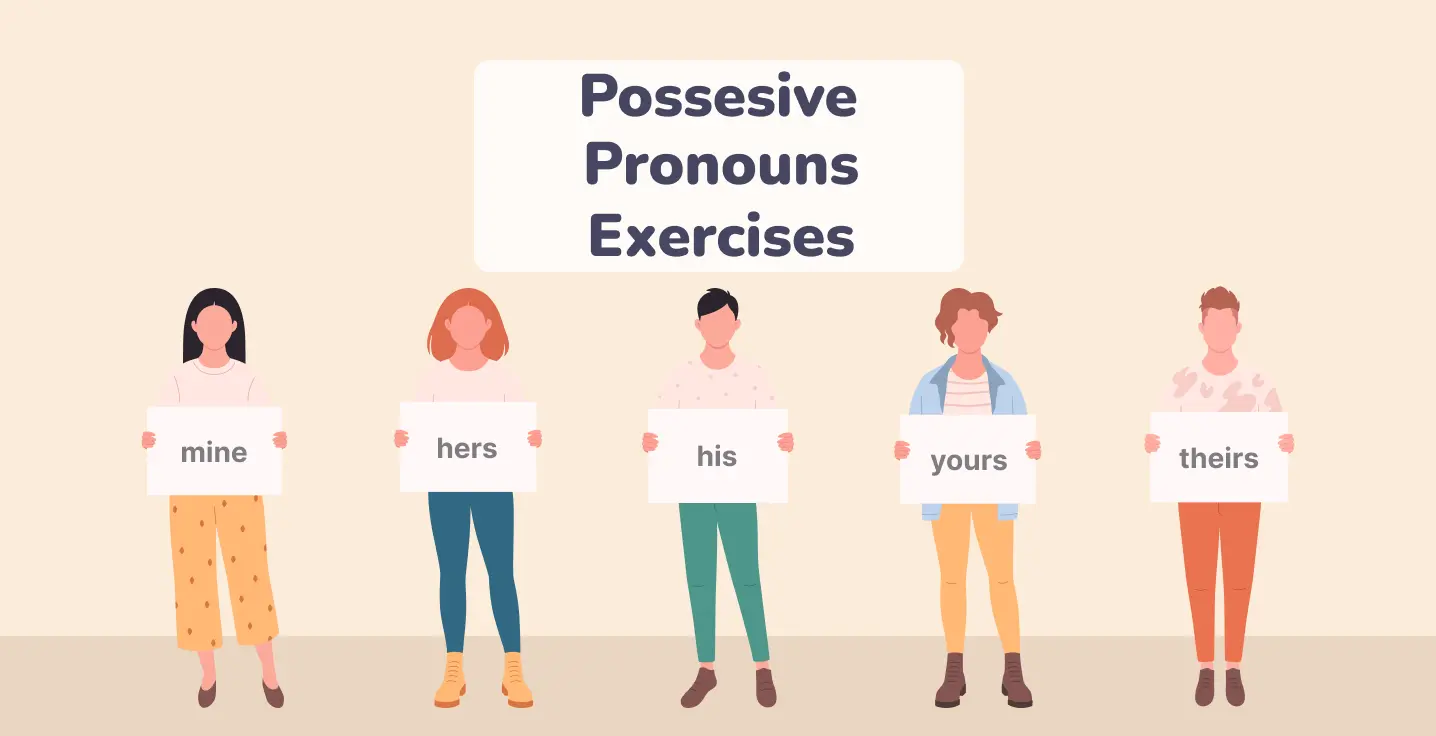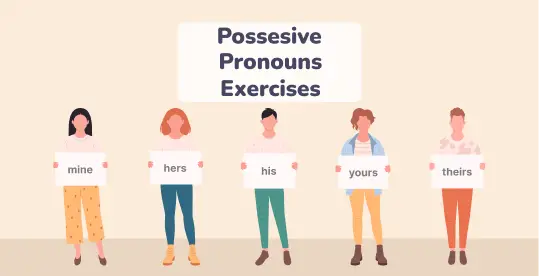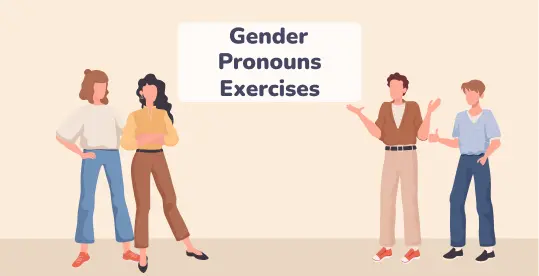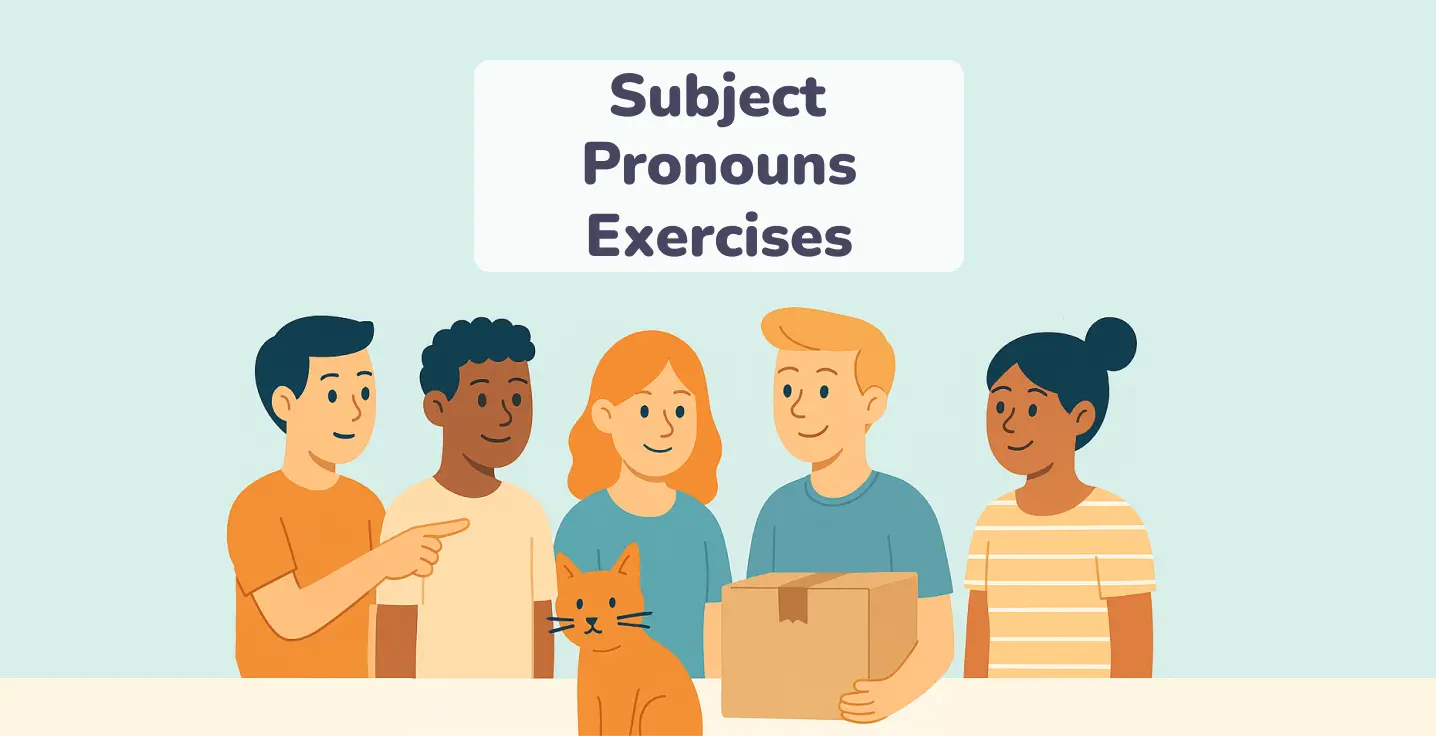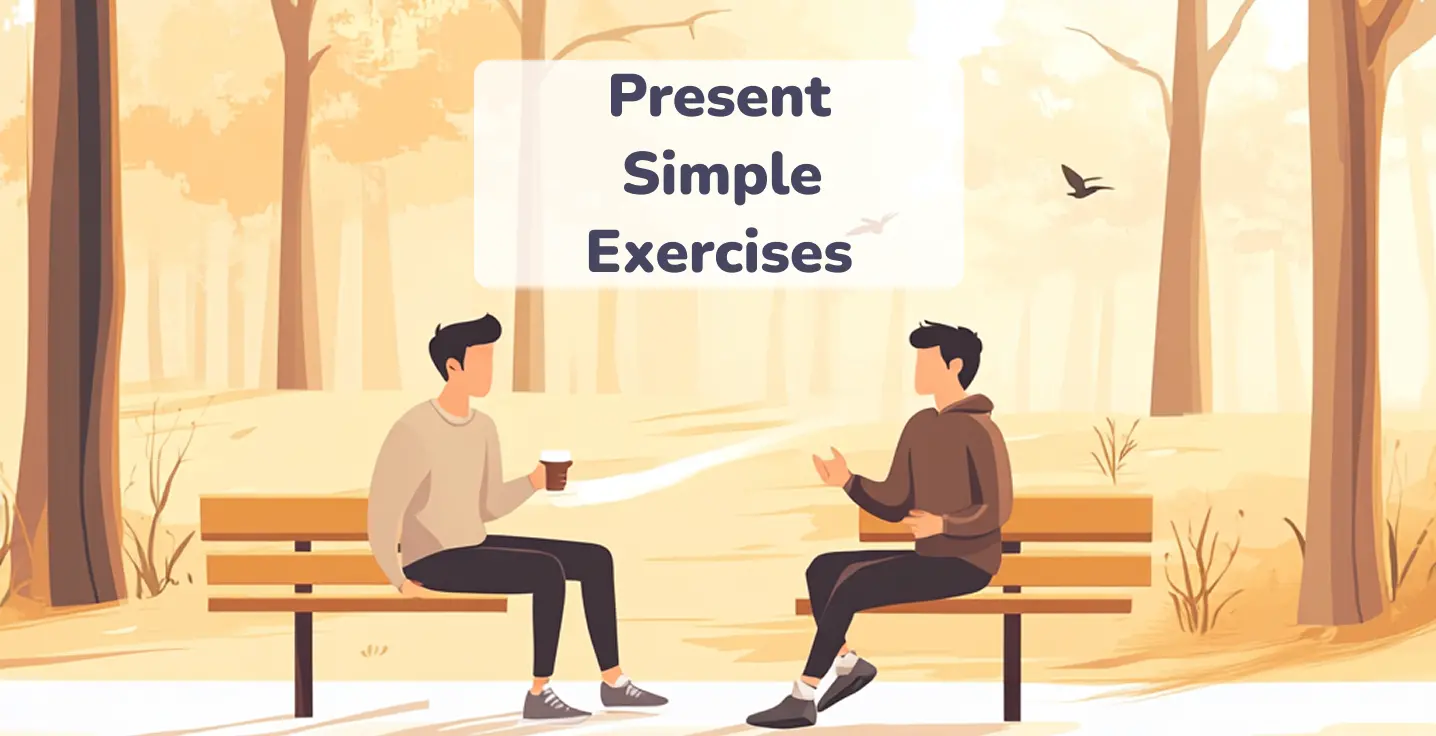Possessive Pronouns Exercises
Tips for effective Possessive Pronouns practice
You won’t struggle with unsatisfying results and bad marks if you follow these tips when applying your knowledge in assignments:
Tip 1. Review your mistakes
As soon as you’ve completed your possessive pronouns exercise and you see the results, review the results. If you have any wrong answers, try to understand why.
Tip 2. Learn similar topics
To be confident with your choice, review the other related topics. For example, when studying the complete list of pronouns in English, you can learn about how they work.
Tip 3. Pass the test several times
One is not enough, especially if you have many red highlights. Completing a drill counts as successful when you can explain why you chose an answer.
Tip 4. Make true-for-you examples
Effective learning goes beyond assignments. After passing a workout, try to write as many sentences as you can with the target grammar to master it.
How to prepare for a Possessive Pronouns test
With a clear goal and the determination to get 100% out of your test, you need to adjust to the following requirements:
Rule 1. Grasp the basics
Good learning material will help you understand how to use possessive pronouns and when to apply them quickly. Real-life examples, tables with explanations of every case, and pronunciation tips will enable you to complete an assignment and write your own sentences.
| Subject Pronouns | Possessive Pronouns |
|---|---|
| I | Mine |
| He | His |
| She | Hers |
| It | Its |
| You | Yours |
| We | Ours |
| They | Theirs |
| “What’s yours is mine, and what’s mine is my own.” — James Joice, “Ulysses” | |
Rule 2. Use a cheat sheet
It is very beneficial when you do possessive pronouns exercises with answers for the first time, because this way you recognize the patterns in the picture and then find them on the screen.
Otherwise, if you don’t have an answer for a question, you may choose the correct box, but you won’t remember and use it in real life.
Rule 3. Learn about tricky areas
There are common errors that many learners can’t avoid in the beginning, just because they are not able to differentiate one grammar structure from another. And it is fine! Below, you will find the most frequent mistakes with the right answers that will help you write and speak correctly.
Don’t worry when passing an online test, because when you learn English online, you have limitless opportunities to complete it again and again, until you see that all the check marks are green.
Common mistakes in the Possessive Pronouns quiz
These pronouns may seem easy, but there are many cases when even native speakers misunderstand them.
For instance, Racelle Green from the Friends series made such a mistake in her letter to Ross in the episode The One With the Jellyfish, using unnecessary apostrophes (look at the error case number 4).
- Using possessive adjectives instead of pronouns.
Most possessive pronouns have special endings that distinguish them from adjectives (my – mine, her – hers, their – theirs).
However, some forms are identical: his – his, its – its.
|
Oh, this phone is my!
|
Oh, this phone is mine!
|
|
Is this baggage your?
|
Is this baggage yours?
|
- Using possessive pronouns with nouns.
Possessive pronouns, just like subject pronouns, replace nouns, so they shouldn’t be used together. If it is clear from the sentence what you refer to, you can confidently use these pronouns instead of nouns.
|
I live in this apartment alone. It is mine apartment.
|
I live in this apartment alone. It is mine.
|
|
Everyone knows that this position is his position.
|
Everyone knows that this position is his.
|
- Misusing the subject pronoun agreement.
This error occurs when you haven’t practiced the personal pronouns topic enough, confusing between he, she, they, and so on.
|
Bella knows what is his.
|
Bella knows what is hers.
|
|
Tom asked not to take the piece of cake, because it’s hers.
|
Tom asked not to take the piece of cake, because it’s his.
|
- Adding unnecessary apostrophes.
It is a common mistake among learners when they do possessive pronouns activities to add ‘ to various words, not only possessive pronouns (mine’s, it’s, who’s).
Here’s the point: no signs are needed, because they already declare the belonging to someone.
|
This brand is ruining it’s reputation.
|
This brand is ruining its reputation.
|
|
Was the sandwich I’ve eaten your’s?
|
Was the sandwich I’ve eaten yours?
|
Conclusion
Have you done this possessive pronouns worksheet? Then it is time to move on to the next topic. Compare the differences between possessive adjectives and pronouns to determine when you need to use each.
Try to write as many ownership sentences as you can using all the grammatical structures you’ve learned about this topic, as repetition is the best way to do so. And Koto English will help you do so in a quick and entertaining way.



